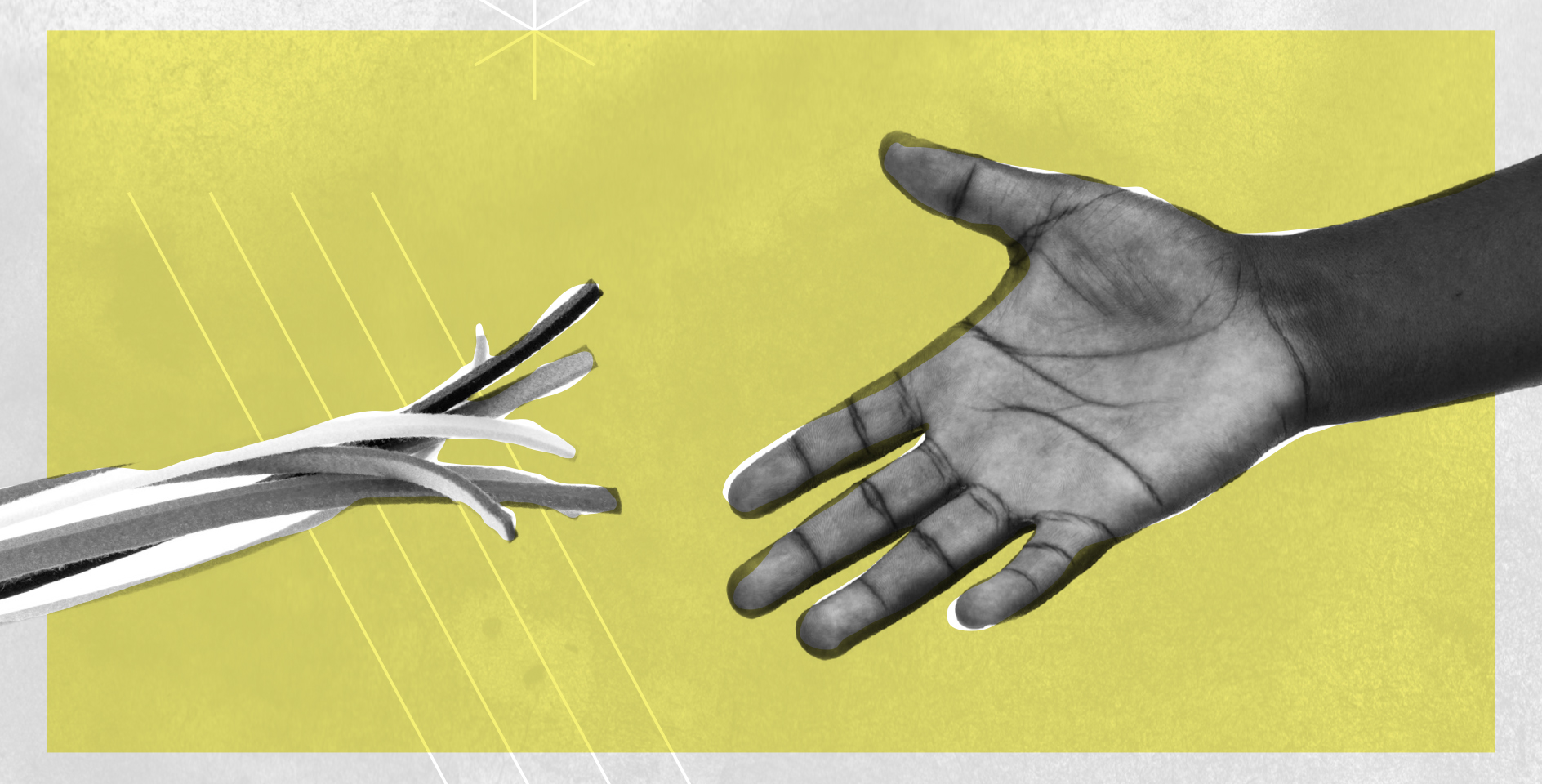Jason Thacker: As churches haven’t been able to gather in many months and as some begin to gather again under various restrictions, what kinds of things do you think we miss about the gathered church that technology cannot replicate or replace?
Jay Kim: Embodied presence. Almost everyone I talk to expresses the same sadness and longing—that all of the digital online mediums at our disposal are helpful but ultimately unsatisfactory. Several months into sheltering-in-place now, as digital fatigue sets in, I think what we miss most is the ability to be near one another as we worship and commune—hearing voices sing together, listening, learning, leaning in together as we hear the Word preached, the shuffling of feet and the extending of hands as we take the bread and the cup together. We miss the conversation in the lobby or courtyard, before and after, all the stuff of human experience that digital connections try but fail to replicate. Technology is doing a fine job keeping us pseudo-connected in this time, but it’s shortcomings are also becoming abundantly clear.
Julie Masson: I miss the atmosphere of being in a room with voices worshipping together. You can’t replicate the sound of the person behind you singing slightly off-key or the visual of the girl in front who is raising her hands and swaying. All five senses seem to be irreplaceable in a virtual setting.
John Dyer: The first things that come to mind are all the little accidental things that happen with physical proximity—reading the face of someone you haven’t seen in a while and knowing you need to go up to them, feeling the room react to a point (or joke) in a sermon, hearing someone else’s baby who’s not on mute. At the same time, I think it’s important to acknowledge that there are already elements of our in-person gathering that technology has replaced, but not replicated. An example of this is online giving, which is so helpful for churches in the summer months, but which also hides the spiritual practice of bringing money every week and the communal practice of seeing our brothers and sisters give together.
I’m not that concerned that we use our technology too much, I am concerned that we use it with too little reflection on how its form shapes our message. – John Dyer
JT:What are some of the best practices you have seen in regards to technology and the church in this season?
JK: It feels a little archaic even saying it but using phones as a listening/talking technology has proven itself to be a beneficial practice during this season, at least in our context and community. Turning away from the lure of social and news media, even texting, and picking up the phone to call someone has become a way of focusing our energy on little things that go a long way. I’ve tried to call people in our church community several times a week throughout this time of sheltering-in-place.
Before the coronavirus, it was mostly emails and texts from me. But now, exhausted by the digital disconnect, being able to focus solely on a voice without the added element of video and text has become a respite. And for some in our community, phone calls are so rare these days that receiving one is almost akin to receiving a hand-written letter in the mailbox; there’s been something surprisingly pleasant about it. Aside from the phone calls, the chat feature during online gatherings has been a helpful tool in creating at least some form of interaction as we “gather” in online spaces.
JD: Churches that had previously built their Sunday gathering times around highly commodifiable elements—three fast songs at pitches only professionals can reach, four minutes of video announcements, two slow songs, a sermon, etc.—were probably most prepared to enable those to be consumed online. What is rarer are churches that have intentional times of silence and prayer, songs that people and families can sing, and interactive elements that bring people out of the “watching church” mode.
JT: In what ways can churches bear the burdens of those who are still unable to attend in-person gatherings for a while due to this virus?
JK: One of the most encouraging and inspiring things I’ve seen come from this season has been the way so many have given their time, energy, and resources to come alongside the most vulnerable and needy in our midst. From picking up and dropping groceries to gardening to delivering meals, I’ve seen people bearing one another’s burdens in very visceral, real-time, real-life ways; an analog leaning, if you will. In some ways, this is one of the simplest and most powerful ways for us to truly be the church.
On an ecclesiological level, one of the most encouraging things I’ve experienced is how this pandemic has unified church leaders. Every Tuesday I’m on a Zoom call with dozens of others serving and leading local churches in the Silicon Valley and greater Bay Area. We pray for one another, share best practices, express specific needs, etc. Much has come of this; specific, pragmatic help from one church to another, as well as constant prayer for each other, and a unified plan for reopening, even though the rollout of that plan will look different from church to church.
I’m hopeful that the church can and will continue to leverage technology. But as we do, we must never forget that the information must always point toward an invitation into embodied realities. – Jay Kim
JM: Overcommunication is key. Our church leaders have done a great job of sending weekly email updates to members, and they keep emphasizing how people can connect with the pastors, what is and isn’t happening in the church, and encouraging people to reach out to their small group members. This same information is repeated in different formats on social media. Overcommunication will help people feel like they know who to reach out to for help and how to be connected to the church while remaining at home.
JD: I see congregations doing all kinds of wonderful work through activities like grocery shopping for those who can’t go out, sharing favorite local restaurants, supporting healthcare workers at nearby hospitals, and holding outdoor gatherings. On a more personal level, I’ve also found that returning to phone calls has been particularly meaningful. One incredible tool is SoundOfYourLove.com which allows friends and family of those quarantined in the hospital to record a soundtrack of messages to give patients hope and connection.
JT: Help us understand some of the dangers of technology in the church and what we might do to avoid abusing these tools or relying upon them too much.
JK: Digital technology often values speed, choice, and individualism. Everything is always getting faster (speed), the options are vast and endless (choice), and our entire experience is customized to our personal preferences and personalities (individualism). When we’re not careful, these values can turn in on themselves and become not only counterproductive but also quite dangerous. Speed can make us impatient, choice can make us shallow, and individualism can make us isolated.
When we find ourselves relying on these tools too much, and our reliance goes unchecked for too long, these values inevitably form us into an increasingly impatient, shallow, isolated people—and the danger here for followers of Jesus is that discipleship is actually a patient, deep, communal work. Awareness of the subtle, subversive, and dangerous ways our use of these technologies is forming us is step one. Implementing defined limits and parameters for use is step two.
JD: I think we need to relentlessly challenge a way of thinking that’s deeply wired into the circuitry of evangelical thinking on technology: “the methods may change, but the message stays the same.” On the surface, this seems right because the gospel seed can grow in the soil of any culture. But this way of thinking also seems to say that form doesn’t matter, that our faith is simply content that can be delivered in any medium, and that beauty, truth, and goodness are separate things. So I’m not that concerned that we use our technology too much, I am concerned that we use it with too little reflection on how its form shapes our message. Instead of using whatever shiny thing we see on Twitter, we have to think intentionally about using form and content together to shape our bodies, souls, messages, and communities.
JT: How might God use technology to further the mission of the church in the coming years?
JM: It reminds me of how people used to believe that ebooks would end up destroying the print book. They were ultimately wrong because ebooks, while convenient, have primarily served to increase the desire for physical books. I agree with others about a similar parallel with online church services driving a greater desire for in-person church gatherings. I hope that more churches will keep an eye toward accessibility, and perhaps, those who were not streaming their services will start so that shut-ins or those who are sick can still partake in a part of the service, even if virtually.
JD: In the opening chapters of Genesis, God says that our creativity is part of our image-bearing and part of our call to have dominion over, cultivate, and care for his creation. In the center of the story is Jesus, who is a second Adam, both by perfectly following the Law and by being a tektōn, a carpenter, who cultivated the Garden and the Temple, and who died on a hideous machine made from the very tools with which he worked. And at the end of the story, we see a resurrected Jesus bringing down from heaven a new city, a holy city, full of all of the things humans make—swords beaten into plowshares, roads paved with gold, trumpets filled with music, and gates in all directions. I think this means that technology and human creativity are not just a means for telling the story, but they are part of the story. I enjoy my work building things like Bible software for closed countries, online education platforms for seminaries, and other tools.
JK: A helpful differentiating line between digital and analog realities has been the divide between information and transformation. Digital technologies offer us incredible opportunities to inform people. And information is undoubtedly an important element to sharing the gospel. But ultimately, the mission of the church does not stop at information but rather, transformation—to be remade day by day into the image of the risen Christ. The work of transformation, I believe, is always an embodied, incarnational work. It’s communal too, in the sense that we cannot do it alone.
We are not saved as individuals headed for a far off place called heaven. We are saved into a family, called to embody heaven’s reality, the rule and reign of Christ as King, here and now, as we look forward together toward the day when Christ shall return and right every wrong. I’m hopeful that the church can and will continue to leverage technology to inform the world of kingdom possibilities in compelling ways. But as we do, we must never forget that the information must always point toward an invitation into embodied realities, where we gather together as the people of God to be transformed in real ways, in real time, and in real space.













